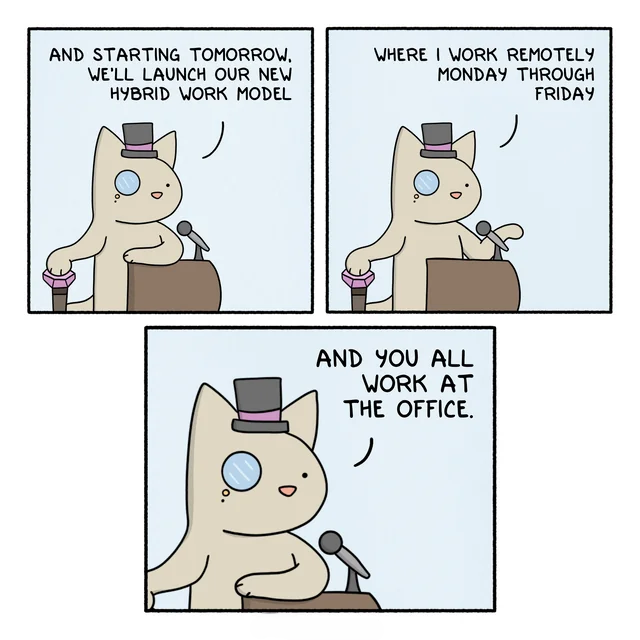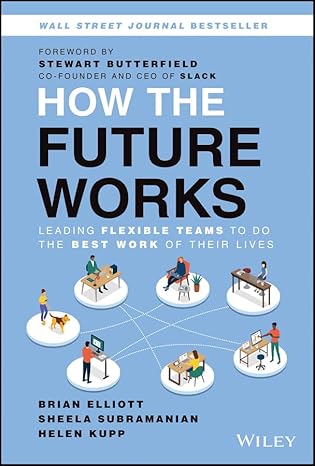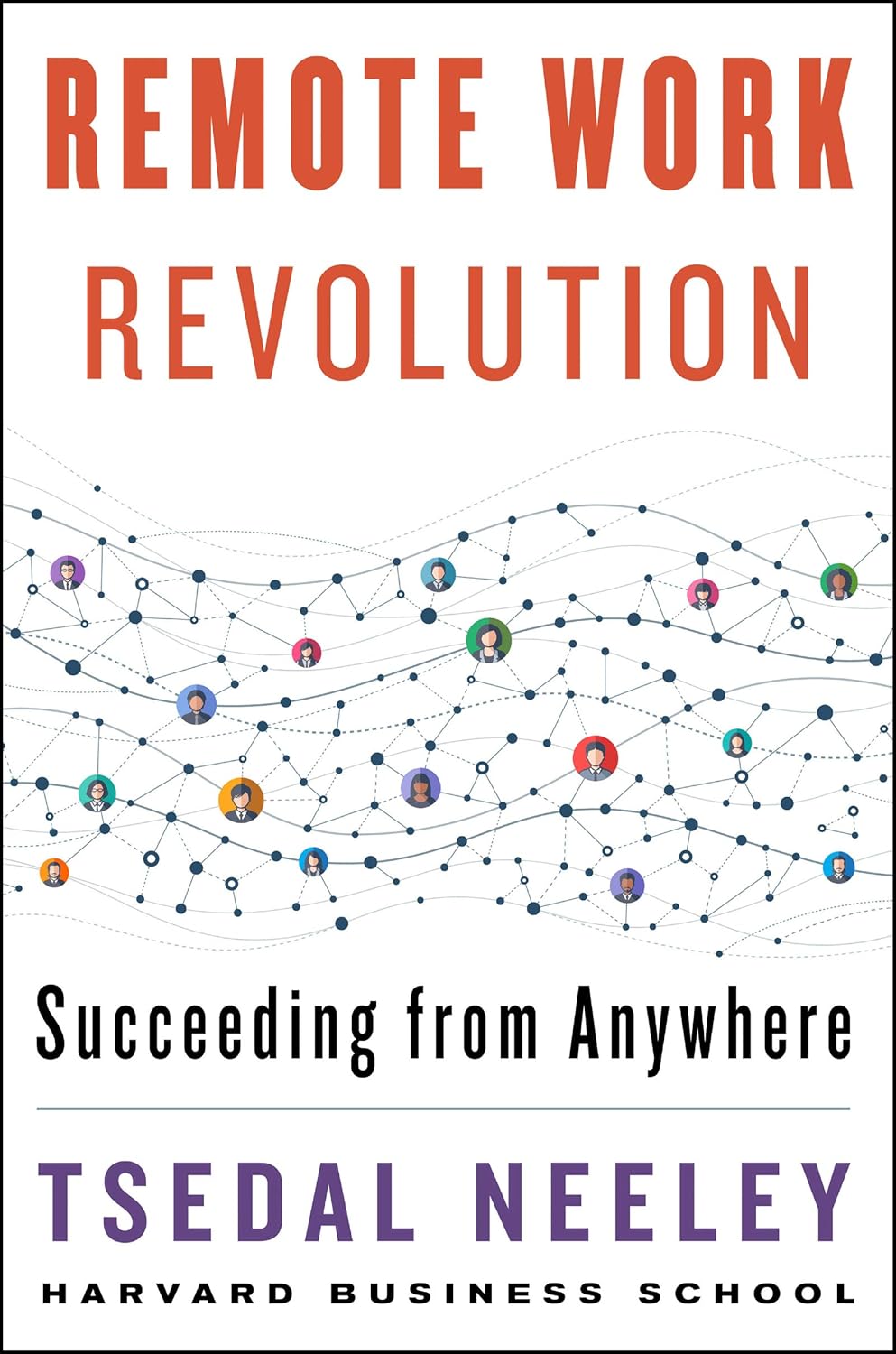Delegation in project management isn't just about offloading tasks; it's a powerful tool for boosting team productivity, fostering professional growth among employees, and cultivating a culture of trust. This article will walk you through 10 practical rules to help yo
Hybrid work models: The future of workplaces
We live in a world of ever-changing technological marvels that allow us to blur the lines between the physical and home office – simply making our lives more difficult.
Let’s look at why the hybrid work model has become a real necessity for businesses that want to stay competitive.
Key takeaways
Variability of Hybrid Work Models — allows companies to tailor optimal solutions to their specific needs
Mutual Benefit — businesses save on office expenses and gain access to a larger talent pool, while employees improve their work-life balance
Comprehensive Implementation — success requires a systemic approach: process audits, technology, clear policies, new office design, and team training
Understanding hybrid work
If you’re still wondering what exactly “hybrid” means, then you’re either extremely lucky to have never ventured outside your work office, or maybe slightly less lucky and have been missing your bedsheets from your comfy cubicle for your entire career.
A hybrid is something in between your traditional office work model and a fully remote one. Specifications vary from place to place, but usually it involves either visiting the office for particularly important meetings and not much else, or always having the option to work either from the office or from a place of your choice.
| Hybrid Work Model |
Description |
Best For |
Considerations |
| Fixed Days |
The company sets specific days for in-office and remote work |
Organizations needing coordination & predictability |
May limit individual flexibility; requires clear communication |
| Flexible Choice |
Employees choose whether to work from the office or remotely | Companies prioritizing autonomy and flexibility |
Needs a strong trust culture and self-management among employees |
| Team-Based Schedules |
Different teams or departments follow their own office attendance schedules |
Cross-functional teams with unique workflows |
Coordination across departments is essential; it can be complex to manage |
| Function-Based Split |
Roles are categorized as primarily office-based or remote, based on their function |
Large or diversified companies with varied roles |
Risk of perceived inequality; needs transparent criteria and clear role mapping |
| |
|
|
|

Pros of hybrid work
Want to keep things lively and personal in your team, but still enjoy that coveted freedom that comes with a fully remote format?
Hybrid might be exactly what you’ve been looking for, and it comes with a whole bunch of great benefits — both for your team and your potential profits:
| Audience |
Benefit |
Description |
| For Businesses |
Cost Efficiency |
Hybrid work helps reduce office-related expenses. Companies can downsize physical space and cut costs on utilities and maintenance, potentially saving up to one-third of their office budget when implemented properly |
| |
Access to a Wider Talent Pool |
Offering remote flexibility expands your hiring geography. You're no longer limited to candidates near your office — a major advantage, especially for tech companies seeking niche talent |
| |
Increased Productivity |
Hybrid setups often boost productivity by combining focused individual work (at home) with collaborative sessions (in the office) |
| For Employees |
Work-Life Balance |
Working from home part of the week allows employees to better manage personal responsibilities, reducing stress and burnout |
| |
Time and Cost Savings |
Less commuting means fewer hours wasted and lower transportation costs — employees can save a meaningful amount each month just on travel |
| |
Flexibility and Autonomy |
Hybrid models offer greater control over how and where employees work, increasing job satisfaction and loyalty to the company |
| |
|
|
And it’s more than just words. Stanford University-led–led research with Trip.com practically proved everything listed above, and it happens to be the largest randomized controlled trial to date involving knowledge workers, mind you.
Integrating hybrid work model
While the entire ordeal is quite nice and proven to be beneficial, there are still a few roadblocks you might encounter on the way to that perfect hybrid format — and we at Taskee, unfortunately, were inexperienced enough to run into more than a few.
Proper preparation is the key to success, though. So here’s your go-to step-by-step guide to make things as silky-smooth as possible:
Step 1. Take a closer look at your business processes
You’re splitting your entire workflow into two completely separate categories, so break it down further to give yourself some much-needed modularity:
- Which tasks require physical presence, and which can be done remotely?
- Which teams interact most frequently with each other?
- What time frames are critical for synchronizing work?
Practical Tip: Create a task matrix where each task is evaluated based on two parameters: the need for collaboration and the need for concentration. This will help determine the optimal work format for each type of task.
Step 2: Ensure the technological infrastructure
A hybrid work model is impossible without the right technology. Spamming “Can you guys hear me? Hello?” on a team-wide Zoom call is… counterproductive. Yes, let’s go with that word.
- Cloud Solutions: Migrate all critical systems to the cloud to ensure equal access for everyone.
- Unified Communications: Implement a unified communication system for seamless interaction.
- Collaboration Tools: Use tools like Taskee, Miro, Figma, Google Workspace, Microsoft Teams, and others.
- Access Control Systems: Provide secure access to corporate resources.
Technical Advice: Don’t forget to enforce a unified security policy and use VPNs to protect data when working from anywhere.
Step 3: Develop clear rules and policies
Hybrid work requires clear guidelines. It’s a delicate balancing act that can easily end in disaster if not managed in a healthy and structured way:
- When exactly should employees be in the office?
- What hours count as working hours when remote?
- How should meetings involving both remote and office employees be conducted?
- How is work performance evaluated?
Example Policy for an IT Team: “Mandatory office days: Tuesday and Thursday, 10:00 AM to 5:00 PM. Mandatory online hours for remote work: 11:00 AM to 4:00 PM. Sprint planning and retrospectives — always in-person. Code reviews — always remote. Daily team meetings — hybrid format using an interactive whiteboard.”
Step 4: No more stuffed offices
In a hybrid model, the office is no longer just a place where people sit at computers — it’s a space designed for collaboration. Beanbags and a couple of PlayStations might be a bit too Silicon Valley-esque, but making the entire space as inviting and conversation-provoking (in a good way) as possible is vital:
- Replace some fixed desks with flexible zones
- Create more meeting rooms of various sizes
- Provide “phone booths” for video calls
- Organize informal communication zones
Practical Idea: Implement a desk booking system via an app. This will help allocate space efficiently and provide usage analytics.
Step 5: Train employees and managers
Hybrid work demands new skills – switching between PC screens and very real and scary human interaction might be tricky to some:
- Train managers to lead distributed teams
- Teach employees effective remote communication
- Develop skills in time management and self-organization
Mini-Training Program for the Team:
- “Effective Hybrid Meetings: How to Participate and Lead”
- “Asynchronous Communication: When and How to Use It”
- “Collaboration Tools: Advanced Features”
Speaking of stuffy cubicles — they might be more important than you think. In 2024, Emerald Insight published a fascinating PLS-SEM analysis on how employee performance is affected by the office environment. And guess what? A well-structured and comfortable workspace is crucial for maximizing employee effectiveness. So even if you’re a hybrid, make sure all company spaces feel welcoming and comfortable. Some plants and a good coffee machine, maybe?
Potential issues
The hybrid work model and the in-office “Civil War” are a bit closer than you think.
So let’s make sure everyone on your team feels right, whether they’re working from home or from the office.
Problem #1: "Two Classes of Employees". Remote workers often feel like second-class citizens compared to those in the office.
Solution:
- Hold all important meetings in a hybrid format, even if most participants are in the office.
- Document all decisions in a format accessible to everyone.
- Rotate the timing of team activities so everyone has a chance to participate
Problem #2: Burnout and Blurred Boundaries. When working remotely, the boundaries between personal and work time often become blurred. We’ve covered this topic separately in an article on burnout and how to prevent it, but here are the key ways to address this issue:
Solutions:
- Implement a "right to disconnect" policy — a rule not to respond to work messages after a certain time.
- Encourage use of the "Do Not Disturb" feature in messaging apps.
- Regularly conduct check-ins to monitor employees’ psychological well-being.
Problem #3: Challenges with Team Building. It is harder to build a strong corporate culture within hybrid teams.
Solutions:
- Organize regular offline events for the entire team
- Arrange virtual team-building activities.
- Create online rituals to strengthen corporate culture.
So yeah, there are pitfalls, but all are very solvable with proper techniques and methods. Deloitte did some pretty nice research on the teamwork in a Hybrid Work Environment in 2023, which yet again proves that no part of your team dynamic will suffer if you’re doing the entire thing right.
Future of hybrid work?
A certain social group is pushing hard to get us all back in the office. So, is hybrid just a small transition, or is it truly the best of both worlds?
There are a few trends going on right now:
- Hyper-Personalization of the Work Experience. Companies will offer increasingly individualized work options that consider each employee’s unique preferences and circumstances.
- Metaverses for Work. Virtual offices within metaverses may become a new dimension of hybrid work, providing a deeper level of interaction among remote employees.
- Four-Day Workweek. The hybrid model may evolve toward a shorter workweek while maintaining or even increasing productivity.
Here’s MIT Sloan’s take on the future of hybrid. TLDR: it’s here to stay. For a long, long time.
Interesting fact 
According to a study by Accenture, 83% of employees worldwide consider the hybrid work model — a combination of remote and office work — to be optimal.
Related articles:
Want your workday to work for you, not the other way around? Check out How to structure your day when working from home: A guide to productivity and balance.
To be more effective at work, read about How to overcome procrastination and boost productivity.
For a good work-life balance, explore How to achieve work-life balance when working remotely.
Conclusion
The hybrid work model is neither a temporary fix nor a forced compromise. It is a natural evolution of the work process that combines the best aspects of both office and remote work. Approach the transition thoughtfully, and Taskee will make your shift as smooth and painless as possible.
Recommended reading 

"How the Future Works: Leading Flexible Teams to Do the Best Work of Their Lives"
A practical guide from Slack leaders on building a flexible work culture where teams can thrive regardless of location.
On Amazon
"Remote Work Revolution: Succeeding from Anywhere"
A Harvard Business School professor provides research and strategies for successfully transitioning to remote and hybrid work, focusing on trust, communication, and setting boundaries.
On Amazon
“Redesigning Work: How to Transform Your Organization and Make Hybrid Work for Everyone"
A systemic four-step approach to rethinking work that helps organizations decide what, where, and how to do work in the hybrid era.
On Amazon






